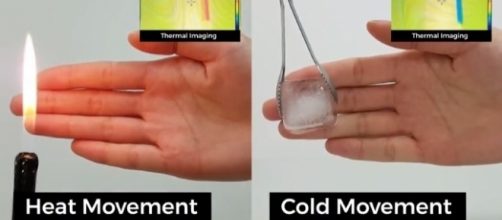A startup company called TEGway has developed a slim and flexible device that can change the way we experience VR and AR. It's called thermoreal with its flexible thermoelectric device or “TED.” TED has the capability of rapidly heating up or cooling down to give its users the sensation of hot and cold. Also, it can combine the heat and cold to produce the sensation of pain.
ThermoReal can cover a temperature range of 39.2 to 104 degrees Fahrenheit or 4 to 40 degrees in Celsius. TEGway is hoping that this device catches the attention of certain manufacturers and applies it to their products such as joysticks, haptic suits and gloves, just to name a few.
Currently, manufacturers are only relying on haptic feedback to give its users a more immersive experience when it comes to VR and AR.
How does ThermoReal work?
The device heats up or cools down by having a thermoelectric semiconductor built into it. An electric current passes through this conductor that creates heat between its layers.
In addition to the heat and cold sensations, ThermoReal can also induce the feeling of pain. When the heat is applied to one line parallel to a line of cold, this creates the sensation of being pinched or the feeling of getting bitten by a small insect.
TED is demoed in Shanghai China
TEGway was able to demonstrate TED at HTC Vive X’s demo day in Shanghai, China, where Engadget’s very own Richard Lai was fortunate enough to test the device himself.
He first tried a stick that was partially covered with TED and was linked to a laptop running ThermoReal’s software.
In the simulation of heat, Lai was shown a video wherein a candle is being held close to a hand. Lai felt the heat on his fingertips when the candle got closer to the hand in the video. Meanwhile, Lai felt the cold when he was shown a video of a man submerged in icy water and the deeper the man went, the colder the stick became.
Lai also tested a gamepad that has ThermoReal taped around its left and right grips. The gamepad was linked to a smartphone that was running a jet fighter simulation game. Lai also felt the heat on the gamepad when the jet fighter spurted out heat through its exhausts. The gamepad rapidly cooled down when the aircraft slows down.
This is a great piece of technology that can be added to VR and AR for a different experience.
Check out its video below.
What do you think of TEGway’s ThermoReal? Let us know in the comment section down below and don’t forget to like and share this article.


